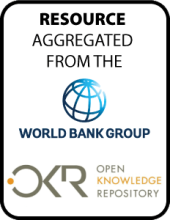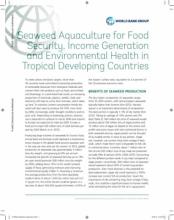Land Library
Welcome to the Land Portal Library. Explore our vast collection of open-access resources (over 74,000) including reports, journal articles, research papers, peer-reviewed publications, legal documents, videos and much more.
/ library resources
Showing items 1 through 9 of 215.This report was drafted by a working group of United Nations entities, the World Bank, and other stakeholders to suggest a common understanding of the blue economy; to highlight the importance of such an approach, particularly for small island developing states and coastal least developed countri
This note is part of an Action Notes series and provides guidance for governments and companies on the conduct of environmental and social impact assessments (ESIAs) and the implementation of associated environmental and social management plans (ESMPs).
This paper investigates possible impacts
of climate change on the poor communities of the Bangladesh
Sundarbans via changes in aquatic salinity and mangrove
species. The implications for poor communities are assessed
To meet carbon emissions targets, more than 30 countries have committed to boosting production of renewable resources from biological materials andconvert them into products such as food, animal feedand bioenergy.
Coastal erosion is a naturally occurring
process that is accelerated by human impacts. Artificial
stabilization of the shoreline, the deterioration of natural
formations, the construction of infrastructure, the
Fisheries constitute an important source
of livelihoods for tens of thousands of poor people in the
southwest coastal region of Bangladesh living near the
UNESCO Heritage Sundarbans mangrove forest, and they supply
This report presents the results of a randomized evaluation larger pool of 452 eligible candidates within the 14 CRP
of the impact of the Community Rangers Program 'treatment' communities, 280 such youths were randomly
This report was prepared by the World Bank in partnership with the Livelihoods and Food Security Multi-Donor Trust Fund (LIFT).
The international development community
is increasingly demanding better evidence on the
effectiveness of policies and programs across different
sectors. The forest sector is no exception. Governments and





